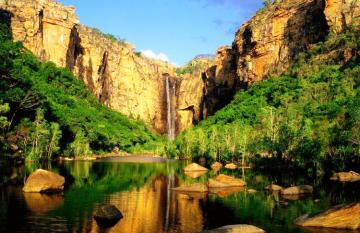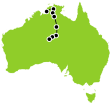
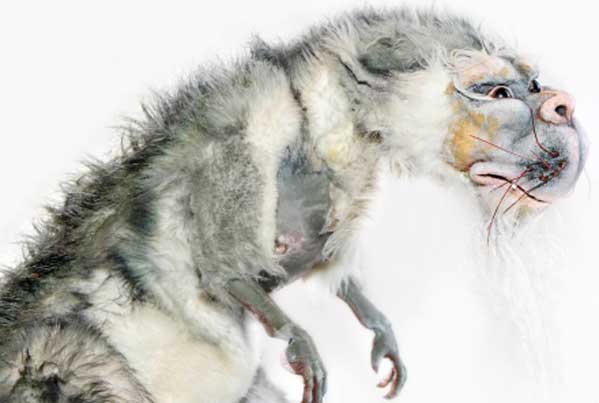
The Aboriginal people believe they have lived in Australia since the beginning of all things. Archaeologists have dated their occupancy to many tens of thousands of years and much of the Aboriginal mythology harks back to these earliest of times. Stories and legends were expressed in everyday life through art, song, and dance - verbally handed down by word of mouth from these ancient times. Here is a selection of fascinating mythology including some that have startling explanations.
The Bunyip
The Bunyip is a large mythical creature from Aboriginal mythology, said to lurk in swamps, billabongs, creeks, and waterholes. Their terrifying bellowing cries and shrieks heard only at night, frightened Aborigines to the point where they would not approach any water source where a Bunyip might be waiting to devour them. The word Bunyip is usually translated by Aboriginal Australians today as "devil" or "evil spirit" Across Aboriginal Australia there are at least nine regional variations to descriptions of the Bunyip, the most prevalent being that of a huge fearsome creature, furry, half-human half-beast with a long neck and a head like a bird. Various written accounts of Bunyips were made by Europeans in the early and mid-19th century, as settlement spread across the country, but none of these were scientifically verified - Australians now consider the existence of the Bunyip to be mythical.
A Scientific Explanation?
In-1830, the discovery of fossilized bones, unearthed in the Wellington Caves, south of Wellington, New South Wales, changed the way scientists understood ancient fauna forever. British anatomist Sir Richard Owen identified the fossils as the gigantic marsupials Nototherium and Diprotodon (shown above). The Diprotodon sometimes is known as the Giant Wombat or the Rhinoceros Wombat is the largest known marsupial ever to have lived. Along with many other members of a group of unusual species collectively called the "Australian megafauna" At the same time, settlers observed "all natives throughout these districts have a tradition of a very large animal having at one time existed in the large creeks and rivers and by many it is said that such animals now exist” – the Bunyip These giant marsupials lived in Australia up until around 25,000 to 50,000 years ago so it is very possible that they co-existed with early Aborigines for many thousands of years. Bones of butchered animals have been unearthed from early human settlements and identified as being the diprotodon.

The Dirawong ( and the Rainbow Serpent)
In the Bundjalung Nation's (Coastal New South Wales) mythology, one of the first dream time creatures’s to appear is that of the Dirawong, a large and powerful Goanna (an Australian monitor lizard) that is believed to have shared with the Bundjalung a vast range of knowledge, teaching them everything from astronomy to medicine. The Dirawong is known as the protector of its people from the Rainbow Serpent. The immense Rainbow Serpent was thought to inhabit certain waterholes. An epic battle was fought between the Dirawong and Rainbow Serpent. The legendary struggle resulted in the creation of parts of the Richmond River, Snake Island, and Pelican Island. The Goanna Headland at Evans Head, New South Wales is believed to be the Dirawong’s physical body guarding against the snake's return.
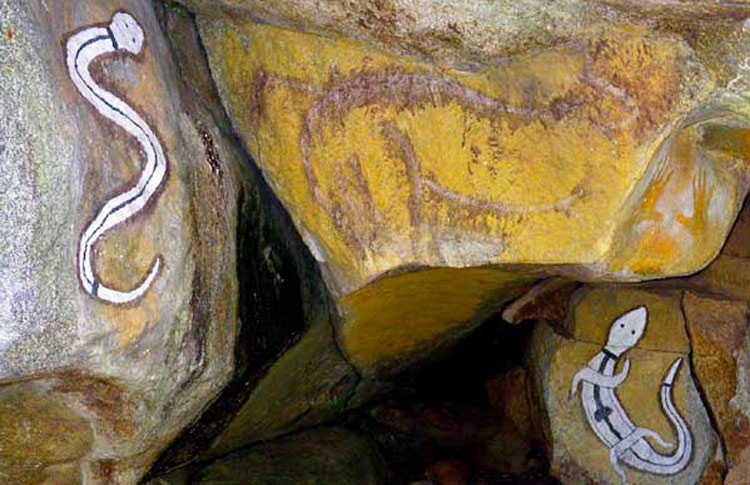
A Scientific Explanation?
In 1994, excavations at Cuddie Springs in north central New South Wales exposed numerous bones of what is now known as Megalania, the giant Goanna. It was a true monster its maximum length was approximately 5.5 meters, its weight about 600 kilograms, so it was twice the length of the Komodo Dragon. Recent research shows that Megalania was also venomous and was the largest carnivore to have lived in Australia during the last two million years. It is an extinct giant monitor lizard. It was one of the megafaunas that roamed Southern Australia and appears to have disappeared before the peak of the last Ice Age (18,000 years ago) when Australia was becoming drier and Megalania’s prey less numerous - Interestingly enough some scientists think it may have been partially aquatic. There is a chronological overlap between humans and Megalania so early Aboriginal would have encountered this creature.
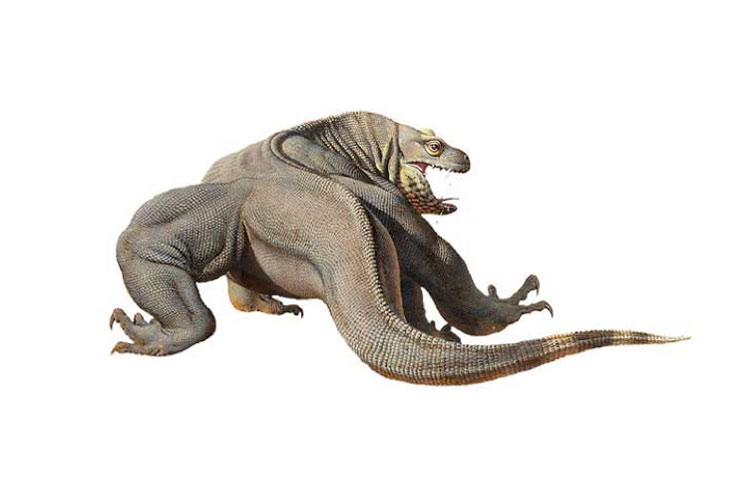
Article updated on the 10th of October 2018 by Brent
Recent Posts
Blog Categories
Blog archives
- March 2025 (1)
- November 2024 (1)
- October 2024 (1)
- September 2024 (8)
- June 2024 (4)
- May 2024 (2)
- April 2024 (2)
- March 2024 (13)
- February 2024 (3)
- January 2024 (5)
- December 2023 (6)
- November 2023 (4)
- October 2023 (11)
- September 2023 (2)
- August 2023 (6)
- July 2023 (2)
- June 2023 (17)
- May 2023 (3)
- April 2023 (5)
- March 2023 (8)
- February 2023 (9)
- January 2023 (12)
- December 2022 (9)
- November 2022 (12)
- October 2022 (12)
- September 2022 (12)
- August 2022 (6)
- July 2022 (9)
- June 2022 (7)
- May 2022 (3)
- April 2022 (4)
- March 2022 (6)
- February 2022 (1)
- January 2022 (4)
- December 2021 (2)
- November 2021 (3)
- October 2021 (1)
- September 2021 (4)
- August 2021 (10)
- July 2021 (13)
- June 2021 (6)
- April 2021 (2)
- March 2021 (2)
- February 2021 (1)
- January 2021 (1)
- December 2020 (2)
- November 2020 (3)
- October 2020 (2)
- September 2020 (1)
- August 2020 (1)
- July 2020 (1)
- June 2020 (1)
- May 2020 (1)
- March 2020 (1)
- February 2020 (2)
- January 2020 (4)
- December 2019 (2)
- November 2019 (1)
- October 2019 (1)
- September 2019 (5)
- August 2019 (1)
- July 2019 (5)
- June 2019 (1)
- May 2019 (1)
- April 2019 (1)
- March 2019 (1)
- February 2019 (1)
- January 2019 (1)
- December 2018 (1)
- October 2018 (1)
- May 2018 (1)
- February 2018 (1)
- December 2017 (1)
- October 2017 (1)
- June 2017 (1)
- May 2017 (1)
- February 2017 (1)
- January 2017 (1)
- September 2016 (1)
- August 2016 (2)
- July 2016 (1)
- June 2016 (1)
- May 2016 (1)
- April 2016 (1)
- December 2015 (1)




